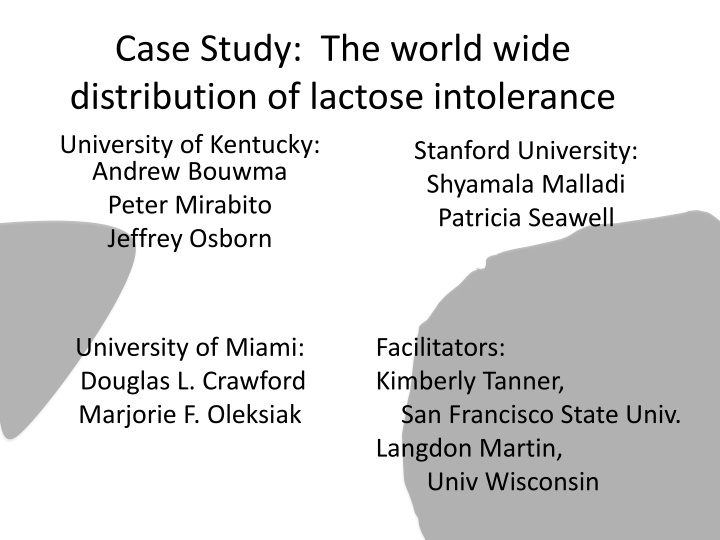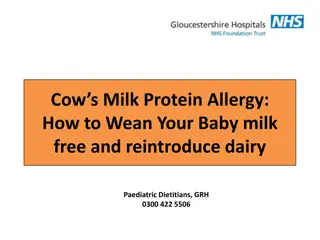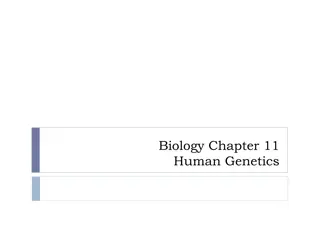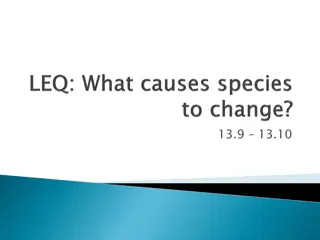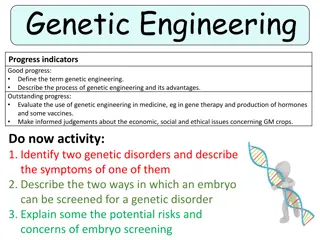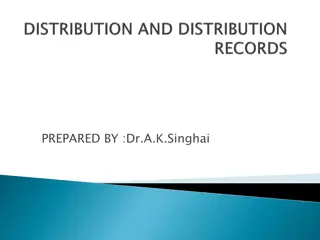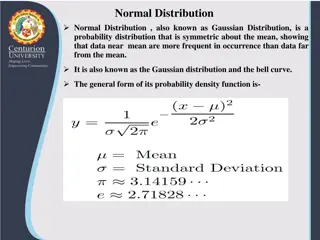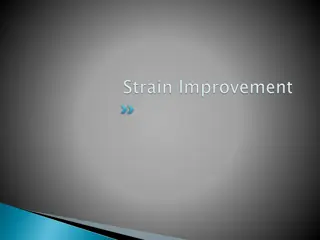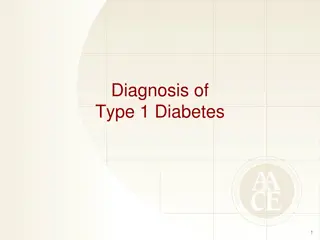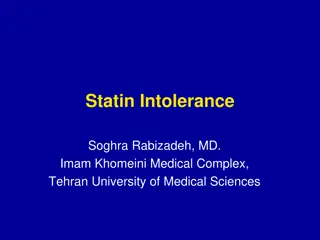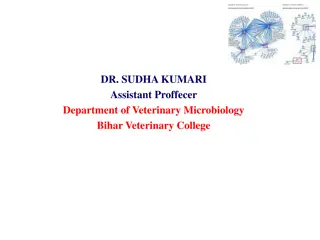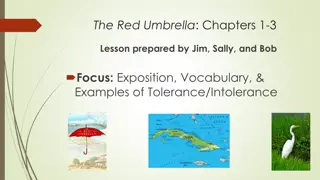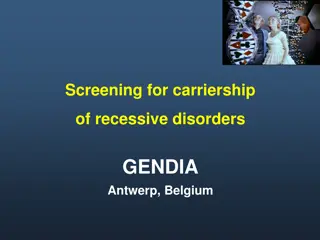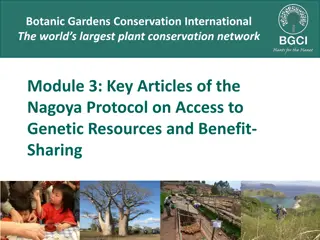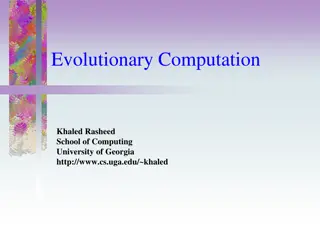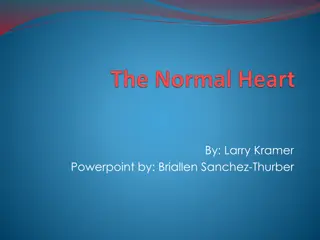Genetic Mechanisms and Lactose Intolerance Distribution
Explore the genetic foundations of lactose intolerance through a comprehensive study on gene concepts, transcription and translation mechanisms, regulation processes, and phenotypic outcomes. Engage with learning goals focused on genotype-phenotype relationships, scientific processes, and the unique ability of certain populations to digest milk. Delve into the intricate world of genetics and biogeography to understand how genetic variations impact human health and evolution.
Download Presentation

Please find below an Image/Link to download the presentation.
The content on the website is provided AS IS for your information and personal use only. It may not be sold, licensed, or shared on other websites without obtaining consent from the author.If you encounter any issues during the download, it is possible that the publisher has removed the file from their server.
You are allowed to download the files provided on this website for personal or commercial use, subject to the condition that they are used lawfully. All files are the property of their respective owners.
The content on the website is provided AS IS for your information and personal use only. It may not be sold, licensed, or shared on other websites without obtaining consent from the author.
E N D
Presentation Transcript
Case Study: The world wide distribution of lactose intolerance University of Kentucky: Andrew Bouwma Peter Mirabito Jeffrey Osborn Stanford University: Shyamala Malladi Patricia Seawell University of Miami: Douglas L. Crawford Marjorie F. Oleksiak Facilitators: Kimberly Tanner, San Francisco State Univ. Langdon Martin, Univ Wisconsin
Classroom Setting Sophomore Genetics Course Students have been introduced to Genes Molecular Mechanisms of Transcription Transcriptional Regulation Molecular Mechanisms of Translation Translational Regulation
Learning Goals Students will understand (1) the concept of a gene Measurable Outcome Students will be able to - Sketch a representation of a gene and label its parts (promoter, intron, exon, termination signal) - Relate Mendel s inheritable traits to a gene - List, order and define the active players in transcription (or diagram) - contrast the structure of nuclear DNA and hnRNA with cytoplasmic mRNA (2) the mechanism of transcription - how does exercise lead to larger muscle mass - predict which genes might be expressed under conditions of exercise or hypoxia (low blood oxygen) - how does eating more sugar lead to more absorption of sugars (3) the regulation of transcription - Generate a strip sequence that describes the process/mechanism of translation - Describe how some antibiotics kill bacteria - compare and contrast global vs mRNA specific regulation - imagine five ways that protein synthesis can be regulated - explain how skin becomes darker when exposed to the sun - describe how DNA affects the production of hemoglobin - - explain why a person of northern European descent can drink milk, while a majority of the world population cannot (4) the mechanism of translation (5) the regulation of translation (6) how genes affect phenotypes - read and interpret biogeographical maps - read and apply appropriate information from the primary literature to a scientific problem or question. (7) and engage in specific components of the scientific process.
Learning Goal 6) Genotype Phenotype 7) Engagement in the Scientific Process Outcomes: Interpret the biogeographical maps Read and apply appropriate information from the primary literature to address a scientific problem. Students will explain why specific populations maintain the ability to drink and digest milk through adulthood.
What do you think is the percentage of adults around the world who are lactose intolerant? A:0-20% B: 20-40% C: 40-60% D: 60-80% E:>80%
Lactose and Lactose Intolerance Lactose is milk sugar, a disaccharide in all mammalian milk Lactose intolerance is the inability to digest lactose, because of a lack of the required enzyme lactase in the digestive system. Drinking milk without having an active lactase enzyme produces gastro-intestinal distress (e.g.,diarrhea). It is estimated that 75% of adults worldwide show lactose intolerance.
Adult Worldwide Milk Intolerance due to the Inability to Digest Lactose Milk Intolerance Native Americans Aboriginal Australians Adapted from http://en.wikipedia.org/wiki/Lactose_intolerance
Adult Worldwide Lactose Intolerance Milk Intolerance What do these data say about the worldwide distribution of the ability to drink and digest milk as an adult? Think & Write 1 minute Pair-Share 2 minutes
Predict What would you predict is the relationship between the world wide distribution of adult and infant lactose intolerance? A: Same B: Opposite C: Unrelated D: Same except for North America Milk Intolerance
Discuss Convince your neighbor and revote What is the relationship between the world wide distribution of adult and infant lactose intolerance? A: Same B: Opposite C: Unrelated D: same except for North America
What is the relationship between the world wide distribution of adult and infant lactose intolerance? Frequency of Lactose Intolerance in Infants Milk Intolerance >90% Tolerance
Brainstorm Given these data: 75% of adults worldwide cannot drink and digest milk Yet nearly all infants are able to digest milk Propose molecular mechanisms to explain why only a few populations have the ability to drink and digest milk throughout adulthood.
Choose a hypothesis The molecular mechanism that explains why only a few populations have the ability to drink and digest milk throughout adulthood includes variation in: A: the coding region of the lactase gene B: the regulatory region of the lactase gene C: transcription factors D: the post-translational modification of the enzyme lactase E: None of the above
For your final assessment Read the Genetics paper on Lactose Intolerance Write a short essay (250 words) to defend one hypothesis and refute one other > Paper will be posted on Blackboard. > Potential hypotheses will be posted. > Biogeographic map will be posted.
Activity/Assessment Topic Time Clicker Think about people you know who are lactose intolerant 1 minute Map Interpretation Analysis of biogeographical data 2 minutes Think and Write Pair-Shore How much diversity is there in lactose intolerance 3 minutes Clicker Predict infant milk intolerance 1 minute Clicker Discuss and revote 2 minutes Brainstorm and write Propose molecular mechanisms to explain lactose intolerance 1 minute Clicker pre-assessment Vote on molecular mechanisms to explain lactose intolerance 1 minute Final assessment Defend and refute hypotheses Homework Diversity: Not using red-green map colors Population diversity Teaching methods addresses a diversity of learning styles Possible discussion of Got Milk
